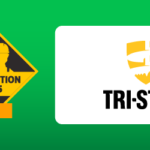If purchasing safety software is on your mind, you’ve come to the right place.
Maybe it’s budget season, or maybe you just faced an OSHA audit. Or maybe your business is growing and you’re ready to take your safety program to the next level. No matter when it is, it’s important to seize any opportunity to present environmental, health and safety (EHS) software to your company leadership.
For many companies, making an investment in safety software can be daunting. It’s clear to safety team members and crews that EHS software can help you protect your people and run a more efficient safety program. However, company leadership is often hesitant to invest in safety software because they can’t always understand the ROI. Company leadership wants to know how safety software can save lives and money. Sound familiar?
We have a few tips to help you frame your conversations with company leadership and make a pitch for EHS software.
What is the ROI of EHS software?
The more investment you put into your safety program, the more likely you are to see a greater ROI - a greater return on your financial investment, and a greater return in your safety program as a whole.
When you’re choosing a safety software solution, there are small tools for creating digital forms, large tools for creating forms, process-based software solutions, and everything in between. Think about the greater business goals and how much ROI the company might want to see.
What are your company goals, and how can EHS software help?
Think about how the purchase of EHS software can align with the greater company goals.
Go paperless
Maybe you’ve already seen how paper is inefficient, and it can also be a liability to your company. Running a safety program (daily meetings, inspections, etc.) on paper creates mountains of paper, and sorting through paper, finding missing paper, and shuttling paper around to different job sites takes time.
In addition, can your business easily find safety records from weeks ago, months ago, even years ago? If you can’t show any proof to refute an OSHA investigation or other inquiry, your company may be held liable for an incident.
If going paperless is a company goal, show how a spend on technology can reduce exposure to an expensive fine down the road. Maybe your company has been fined before and lacked proper documentation. What was the cost of the fine versus the cost of a digital safety software solution?
Also, time is money! Talk about how much time and hourly salary your company spends on safety admin work versus the cost of a digital safety solution.
Improve company reputation
Your company may be looking to improve its online reputation in order to hire new employees and build community trust. Any incidents, investigations, or general bad news about your company will likely show up on the internet for all to see. Prospective employees almost always look up a potential employer online, and if a prospective employee sees major safety incidents, they may reevaluate their interest in your company.
If your company makes a progressive investment in EHS software in order to improve your safety program, talk about how that could help attract top talent and prevent negative news from going public.
Be eligible for more bids
If your company is ready to grow and bid on more projects, having a strong safety program can help. With a strong safety record and a safety solution in-place, you may be eligible for more bids.
Has your company lost any bids due to past safety issues? If so, you can compare the cost of lost work to the cost of implementing an EHS software solution.
Cut costs
Company leadership might not see the connection between investing in your safety program and major cost savings down the road. If you want money for EHS software, you may have to make this connection for them!
Remember what we mentioned earlier - the greater the investment (financial or otherwise) in a safety software solution, the greater the ROI will likely be. Look at how much past incidents, fines, and retraining have cost, and compare that with the cost of safety software.
Talk about common risk costs and how a safety solution can help reduce these costs. For example:
Direct costs:
- Medical expenses
- Litigation costs
- Property damage
- Fines
Indirect costs:
- Low morale
- Loss of productivity
- Damage to reputation
- Train a new hire
This part will require some introspection. How will your safety program change with the addition of EHS software? What specific risk costs can be reduced?
What are you really trying to get from a safety software solution?
Before you even start looking at EHS software, think about the goals you want to achieve by investing in a safety software solution. For example:
- Digital safety records
- Fill gaps in hiring and increase recruiting
- Reduce safety administrative time and costs
- Manage crews across job sites
- Reporting and analytics
This will help you stay focused and figure out which safety software solutions will meet your needs.
Who will be on my team?
Once you have your case and goals prepared, it’s time to start assembling your team.
Think about partnering with someone who can collaborate with you on your presentation to leadership. Two heads can often be better than one. In addition, you’ll need a champion in company leadership who can advocate for purchasing EHS software.
How do I present to my company leadership?
Once you have your proposal ready and team assembled, it’s time to take your request to the top company leadership. You’ll need to work with your champion to figure out how decisions are made. For example, maybe you need budget approval first, or maybe you need the CEO’s approval first.
When you’re making your pitch, it’s important to tie your pitch back to the company goals, and make sure you’re showing concrete data and numbers. For example, if your company is looking to cut costs, compare the cost of investing in EHS software and improved processes with any fines or injury costs from the past year.
When presenting to your company, think about breaking down the ROI into short term (one year), medium term (3 years), and long term (5+ years). This will help you show your company that this is an investment in long-term business growth.
Short term ROI: reduce exposure to a fine with digital documentation, use as a recruiting tool.
Medium term ROI: reduce lost-time incidents, build crew loyalty.
Long term ROI: reduce EMR and workers comp costs, win more bids.






